25 April 2018
- VU Amsterdam
Delta Pointers
Scientific research poster
About the project
The systems security group at the Vrije Universiteit (VUSec) asked me to create an illustrated poster to present one of their research papers at the poster session of EuroSys'18 conference (Porto, Portugal).

Final poster design
The average academic conference poster is dense with text and graphs, which makes them difficult to understand. With this illustrated poster we wanted to translate the research into an inviting story that anyone could understand. For the expert viewer, the in-depth technical details were kept on the side as reference.
Poster concept
VUSec's solution to buffer overflows is pictured here as cars (pointers) driving along a road towards their memory objects. Illegal pointers (thieves behind the wheel!), when 'tagged' as such, can cause the MMU on the bottom to fault automatically, making for a 'free' bound check. The core research and goal of the poster was to explain this 'tagging' process.
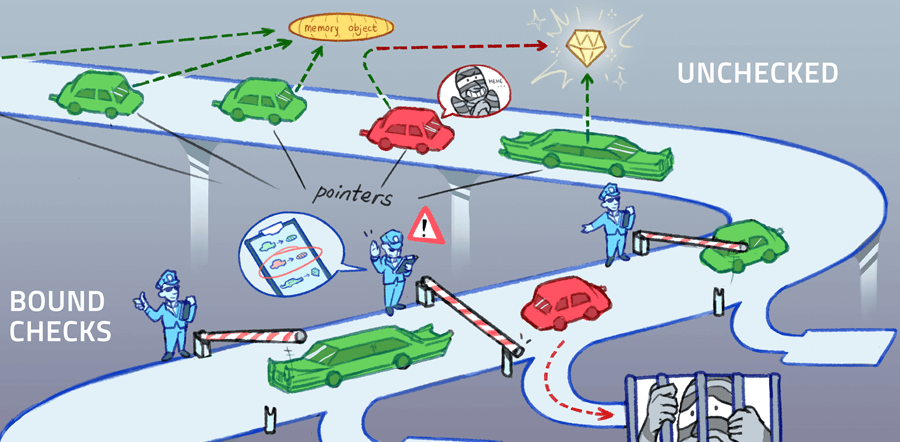
The poster begins by showing the risks of leaving pointers unchecked, and the current yet inefficient way bound checks are done
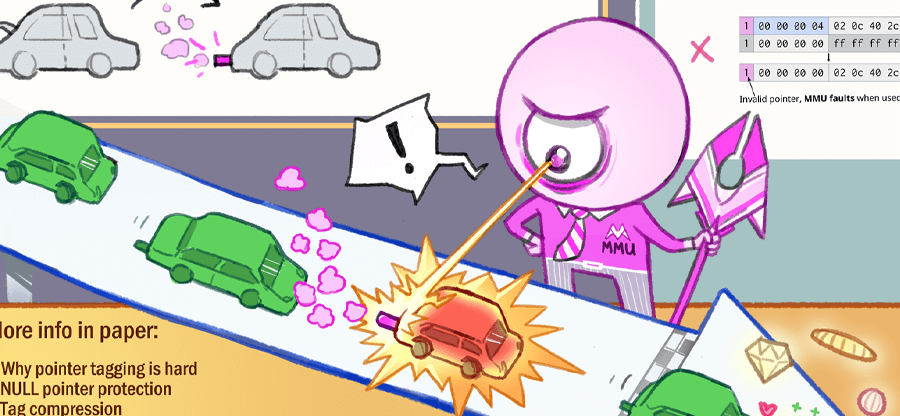
The MMU automatically faults at the out of bounds pointer 'tagged' with the pink exhaust
Process
To translate complex information like this into an illustration required close collaboration between the researchers and me. This particular paper was published a few months prior, and a first version of the poster had already been made.
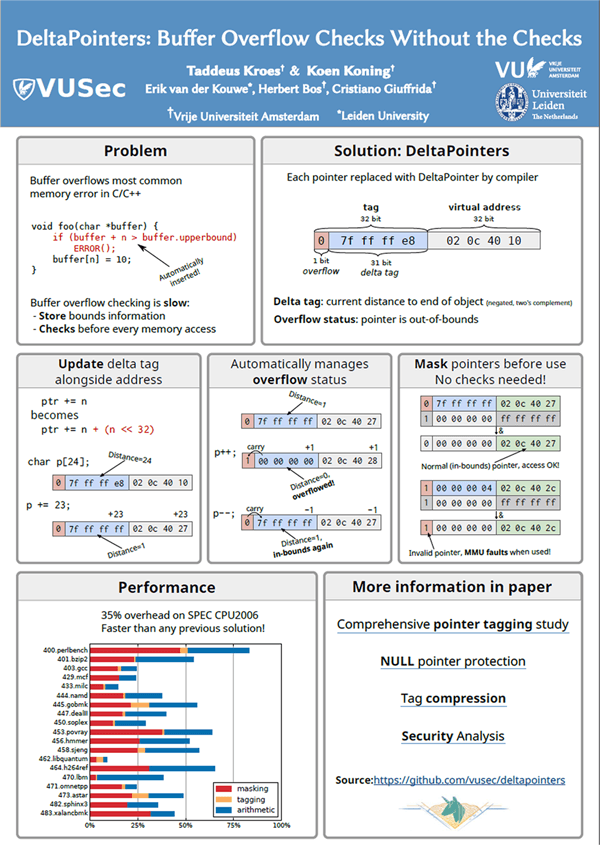
First version of the poster by VUSec
We began by talking through this material while I drew along, mirroring what I'd been explained with different metaphors to check my understanding at each step. This way, it's possible for me to understand the core of something that is not my expertise at all, and find a visual solution for passing that insight along to a specific audience.

Testing the metaphor to explain the research
Information design
Once we found a metaphor that worked, we tried out different compositions for walking through that information. Here the main goal is to figure out what to emphasize and what to downplay or completely leave out. The two researchers who would be presenting the poster discussed three options I provided. They settled on the one depicting their research as one continuous road explaining it as a story in three parts:
1 Current problems with bound checks
2 What are Delta Pointers and how do they help
3 Results

Designing the information into a composition that worked for the presenters
When it comes to composition and the flow of a presentation, what works and what doesn't is highly personal. That's why I always develop this part in close collaboration with the speaker(s) and make sure to test it along the way.
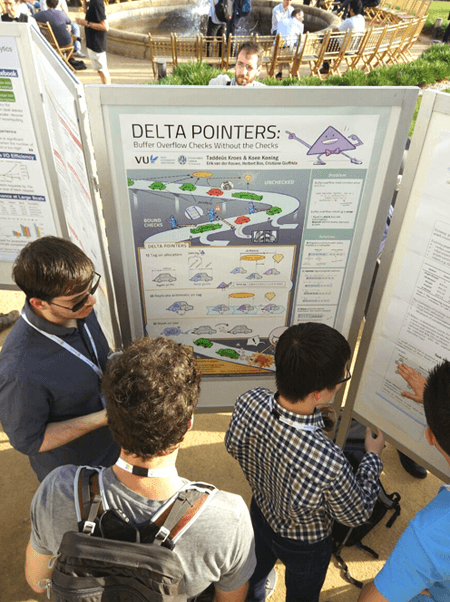
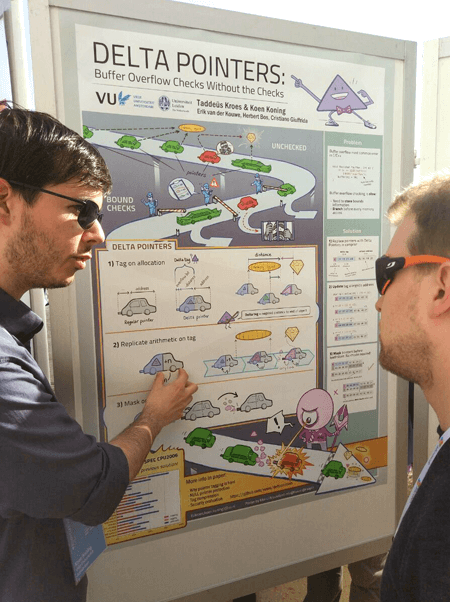
Poster session at Eurosys '18 (Porto, Portugal).
Result
The presentation at EuroSys'18 went smoothly, with many people showing interest in the poster and the research behind it. It had the honor of receiving the "Best Poster Award", and now graces the halls of VU Amsterdam.

Award ceremony after winning the "Best poster award" at Eurosys '18 (Porto, Portugal)
For more information about the research, visit https://github.com/vusec/deltapointers.
Many thanks to Taddeüs Kroes and Koen Koning for the great project and collaboration!